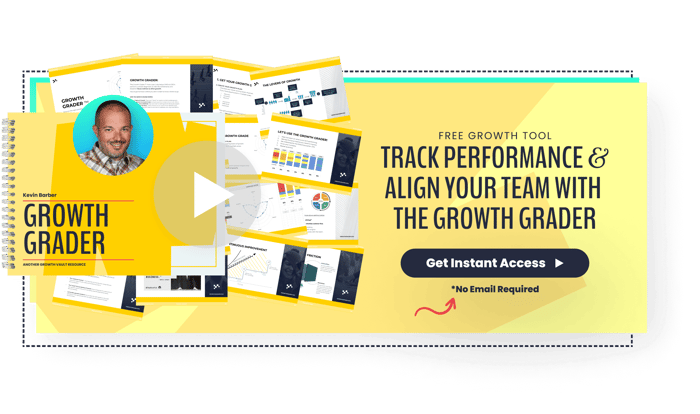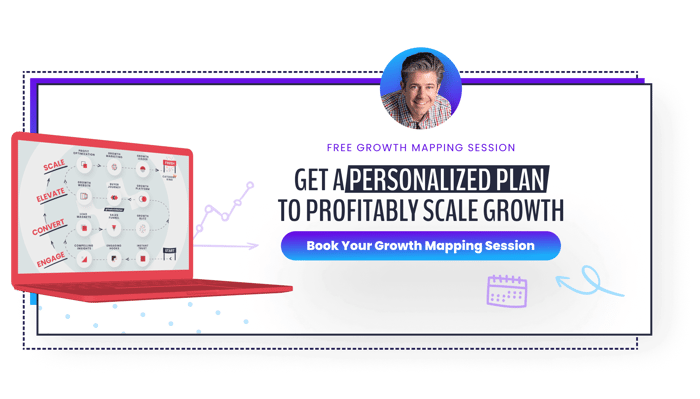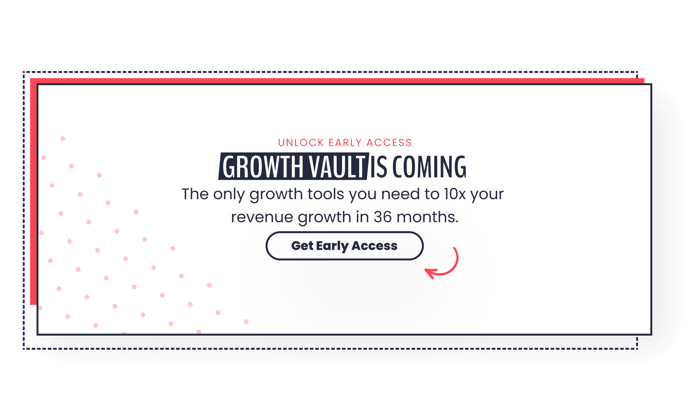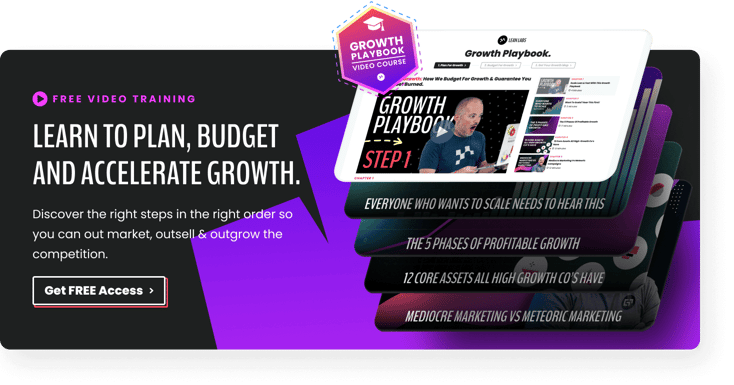Businesses collectively spend over $200 billion on marketing yearly, but they don't spend it well. Some may say that companies waste a lot of marketing dollars or don't produce results. If you're in that boat, you're most likely looking for ways to prevent that from happening again.
In this article, we'll dive into what growth marketing and demand generation are, their unique characteristics, and their similarities and stark differences.
Successful companies have used both growth marketing and demand generation strategies. This article aims to help you determine whether growth marketing or demand generation is the best methodology for your company and phase of growth.
What is Growth Marketing?
Growth marketing isn’t solely focused on building awareness or generating more leads. Growth teams look at the entire AAARRR funnel, or what we at Lean Labs call the “6 Levers of Growth”.
- Awareness: the number of people who know about you and what you offer.
- Acquisition: turning website visitors into leads using a lead magnet.
- Activation: nurturing those leads and qualifying them as ready for sales to convert.
- Revenue: converting leads into paying customers.
- Retention: reducing churn, upselling, and otherwise keeping customers using your product or service.
- Referral: using your current customers’ experiences to help you gain new leads and customers.
Growth marketing teams use Awareness, Acquisition, and Activation to change beliefs with the intent of making a sale. Revenue, Retention, and Referral are all about maintaining those beliefs to create a fan of your business.
The single focus of growth marketing is sustainable revenue growth. Growth marketing teams align around this singular goal and then build a plan to optimize each of the 6 Levers of Growth. Most importantly, growth marketing relies on being strategy and data-driven rather than vanity metrics or subjective feelings.
Common Growth Marketing Tactics and Channels
Growth marketing uses many tactics and channels for growth, but it is tactic and channel-agnostic. Growth teams answer only one question when deciding which tactics to use: “What gives us the highest chance of hitting our growth goals?”
High-performing growth marketing teams generally focus on plays that are compounding versus those that are one-and-done. For example, well-written content can attract and convert leads tomorrow and two years from now. But Facebook ads require continuous financial investment to keep going. It only produces leads while running, but when it’s out of budget, it’s gone.
For this reason, the most common growth marketing tactics and channels revolve around content:
- A regular cadence of blog posts with embedded lead magnets
- SEO research and optimization
- Automated email marketing
- Targeted email marketing campaigns
- Repurposing blog content across social media and search platforms
- Creating lead magnets for use across key webpages
- Building cold, warm, and hot webpages
RELATED: 6 Criteria Differentiating Growth Teams vs. Traditional Marketing Teams
Growth Marketing Metrics & Goals
The “North Star” metric for growth marketing teams is growth rate. However, growth teams must analyze several metrics influencing growth rate:
- Website Traffic.
- Marketing-Qualified Leads (MQLs) - leads that fit your ideal customer profile and have downloaded a lead magnet.
- Sales-Qualified Leads (SQLs) - MQLs that have continued interacting with you, have been qualified through Activation efforts, and are most likely to buy.
- Retention statistics - customer churn, upsells, and cross-sells.
- Referrals - the numberof direct customer referrals and business that comes from testimonials and case study content.
What is Demand Generation?
Demand generation is a data-driven marketing strategy focused on (you guessed it) generating demand for your product or service. Like growth marketing, companies using demand generation are data-driven and must have a solid alignment between marketing and sales. The outcome is a funnel of tactics and channels to generate qualified leads, nurture them, and pass them to sales.

Image source
Common Demand Generation Tactics and Channels
There is a lot of crossover between growth marketing and demand generation tactics and channels. The most significant difference is the use of paid channels in a demand generation system.
- PPC and retargeting ad campaigns
- Paid social media ad campaigns
- Blog post content
- Creating a lead magnet or a free tool like the Growth Grader
- Traditional and digital public relations
- Organic social media content
- Events
- Email marketing campaigns
Demand Generation Metrics & Goals
Again, demand generation focuses on revenue. Some of the goals of companies that use demand generation strategies are similar to growth marketers but with different intention.
- Conversion rates
- MQLs and SQLs
- Cost per lead
- Cost per acquisition
- Return on ad spend
- Close rate
- Customer lifetime value
- Average deal size
Similarities Between Growth Marketing and Demand Generation
Growth marketing and demand generation focus on targeting ideal customer segments versus blasting a message to anyone and everyone. They both use content and lead magnets targeting customer segments to build a sales pipeline. Both strategies also place a premium on lead nurturing and qualification to focus their efforts on converting buyers most likely to purchase.
Finally, growth marketing and demand generation are strategy and data-driven. Measuring progress, metrics, and specific KPIs aren’t about looking good to executives and the C-suite. Measurement guides the daily actions and weekly or monthly decision-making process for optimizing and experimenting.
Key Differences Between Growth Marketing and Demand Generation
There are several critical differences between growth marketing and demand generation.
Referral Engine
Building a referral engine is crucial for growth marketing teams. Growth happens through profitable customer acquisition. Leads stemming from customer referrals cost less and are vital in achieving profitable customer acquisition and growth.
Let’s go back to the AAARRR framework for growth marketing momentarily. While the three A’s are focused on changing someone’s beliefs to make a sale, the three R’s maintain those beliefs to create a fan of your company. Building a referral engine is built into growth marketing.
Demand generation programs generally are focused more on the traffic-lead nurturing-sales flow, though individual teams and companies may focus on building referrals as a component for generating demand.
North Star Metric: Growth vs. Revenue
While growth marketing focuses on growth, demand generation is primarily driven by sales and revenue. What’s the difference? Doesn’t more revenue equal growth? Not necessarily.
Revenue is a key component of growth, but you can significantly increase revenue without seeing the same or any increase in your growth rate. With growth marketing, all six levers function and are optimized to achieve profitable customer acquisition. This is what makes growth possible.
Goals and Modeling
Growth marketing is not subjective. You pick an endpoint, model back from that, and have to hit the numbers. For example, if website traffic is the critical driver of business growth, you may set a goal of 10x-ing your website traffic over the next three years. All you need is your baseline numbers, the end goal of whatever number 10x is, and you can create an objective growth model of the numbers you need to hit every month.
Demand generation focuses on the business plan and overall business goals. For example, demand generation may focus on retaining or upselling 25% more customers or setting goals for “marketing-influenced revenue.” Demand gen teams rarely have the singular focus on one goal like growth marketing teams do.
Team Structure
Demand generation programs are usually spread across multiple teams, such as creative, content, strategy, and lead nurturing teams.
In a growth marketing team structure, there is one cross-functional team. Growth teams, at a minimum, should include a growth marketer, designer, developer, and operations manager. You can build your growth internally, but many companies choose an outsourced growth team that is ready to start building a growth engine right now.
Outsourcing Growth Marketing or Demand Generation
Outsourcing growth marketing and demand generation are two viable options for companies looking to expand their customer base and increase revenue. Growth marketing uses data-driven strategies to identify and target high-potential customers, while demand generation seeks to create interest and awareness around a company’s products or services.
Outsourcing these functions can offer significant benefits, including access to specialized expertise, reduced costs, and improved scalability. However, companies must carefully evaluate their outsourcing options and choose a partner that aligns with their goals, values, and budget. Ultimately, the decision to outsource growth marketing or demand generation will depend on a company’s specific needs, resources, and long-term growth strategy.
Growth Marketing vs. Demand Generation: Which is Right for You?
Choosing which strategy is right for you depends on your business and growth stage.
Growth marketing is typically for your company's early stages, startup companies, and those that aspire for higher growth.
Demand generation could work for many businesses, but keeping customer acquisition profitable is essential. For this reason, demand generation might be best suited for a company that is more established and has a larger marketing budget.
Growth Marketing is a Proven Path to Growth
How do we know? We've done it for these clients. Lean Labs is an experienced growth team ready to help innovative SaaS and tech companies grow by making profitable customer acquisition your competitive advantage. If you have a growth mindset and want to become a high-growth company, we may be the right outsourced growth team.
Your next step is to unlock the Growth Playbook. This training will show you how to plan for growth, budget for growth, and accelerate results.









